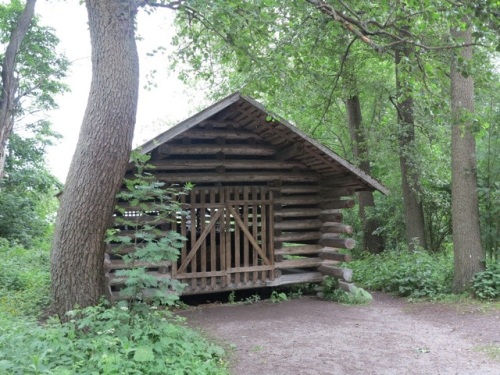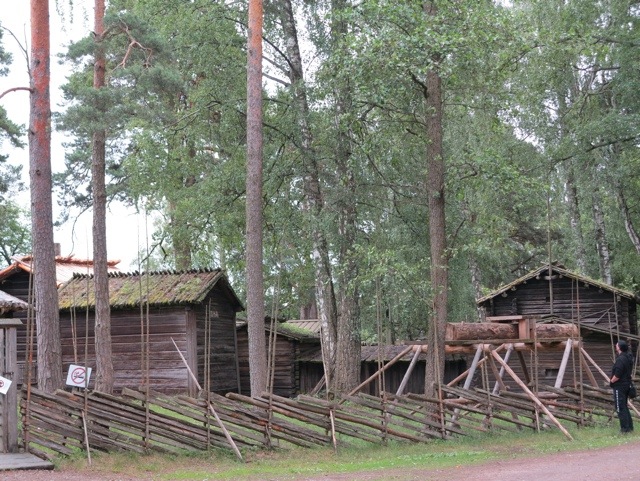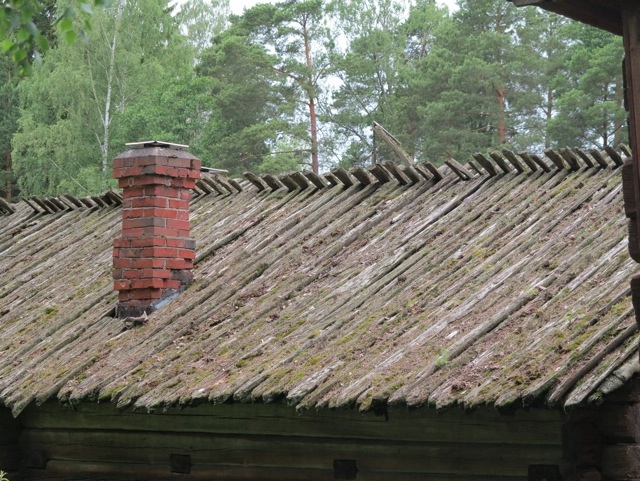Seurasaaren Park is a delightful open air museum not far from the centre of Helsinki. It was established in 1909 by Professor Axel Olai Heikel to help preserve Finnish architectural heritage. Buildings typical of the provinces and regions of Finland have been moved to Seurasaaren to exhibit the country’s historical culture of homes and public buildings. There are 87 buildings on the island.
A lovely white wooden bridge is the entrance to the island.
The island is a haven for birds and animals. Gorgeous brown faced gulls and barnacle geese were the first to greet us.
The views from the bridge are lovely, even on an overcast day.
Come for a walk around the island and discover some of the wonderful old buildings.
The tar boat house. In the 18th century tar had become Finland’s most important export item alomg with the development of sailing-ship fleets. Tar barrels were transported by water from Paltamo to be sold in Oulu. The tar boat was built in the 19th century.
The water mill is a so-called ‘leg mill’. The water turned a horizontal paddle wheel that turned the upper quern stone. Mills were often jointly owned and in spring, when streams and small rivers were in full flood, they worked day and night. The mill was built in the 19th century.
The granary dates from the 17th century and is one of the oldest buildings of the open-air museum. Its understructure prevents mice from getting in the granary and helps ventilate the bottom in order to keep the grain dry.
The collection of buildings above belong to Kurssi Farm.
An old church.
The Magpie Mill is named because the upper section of the mill turns about a vertical axis with a spar resembling a magpie’s tail. The sails were set either with or against the wind. It is from the 19th century.
The pole erected for the summer solstice celebrations.
I was impressed by the wooden roof on this building.
The summer house comes from Moisio Manor in Elimaki, Uusimaa. The Empire-style summer house was designed by C.L. Engel and built in the 1830s.
The country store sold everything that the self-sustaining farms did not produce. It also functioned as a post office, bank and local news agency. The country store and its storehouses were built in the 19th century. Today the building also houses the museum shop.
The island is heavily wooded…and very beautiful. There are wild berries growing beside the walking paths.
The squirrels were a bit too quick to get good photos.
There are a couple of places to have lunch or a snack. We went to the Art Cafe opposite the bus stop. It has a lovely garden setting and we had a delicious salmon sandwich and coffee. They have just opened recently and will offer more in the near future.
Seurasaaren Park is easily accessible from the centre of Helsinki. Take the number 24 bus from outside Sokos department store in Mannerheimintie. The bus also takes you past the beautiful Sibelius Monument.



































